Note: This will make you better than Corran Addison or Jay Kincaid, or your money back. Just follow the instructions.
1: Don’t stick just to moving water
If you can’t master the move in the hole, move back to the canal, grab a squirt boat, and practice your technique on the flat. You won’t be as distracted by the noise, spray, and possibility of a swim down to the basin. You’ll find that you’re suddenly much more aware of how slight movements in your body position can really affect the trim of the boat. Build up a sequence of moves, bring it back to the white water, and you’ll be amazed at the difference!
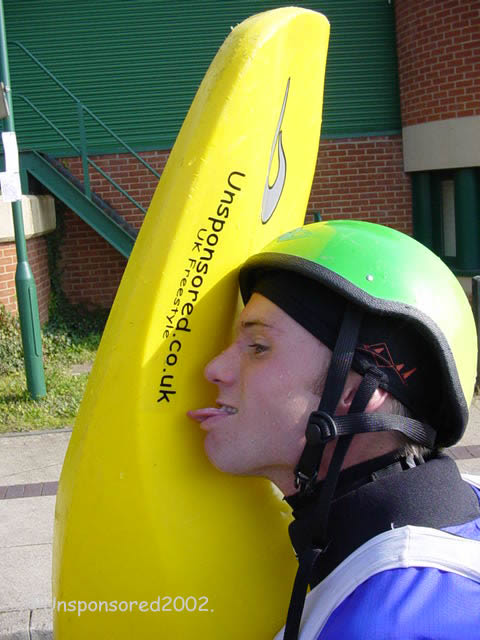
2: Improve your flexibility
Even five or ten minutes stretching at the start and end of a session does make a noticeable difference. The more flexible you are, the less likely it is that you will pull a muscle, and the further you can go, and the better chance you have of nailing that elusive third end.
3: Push yourself
Make an effort to learn new moves. Try something you can’t already do, rather than sticking to that which you can do well, just to impress people.
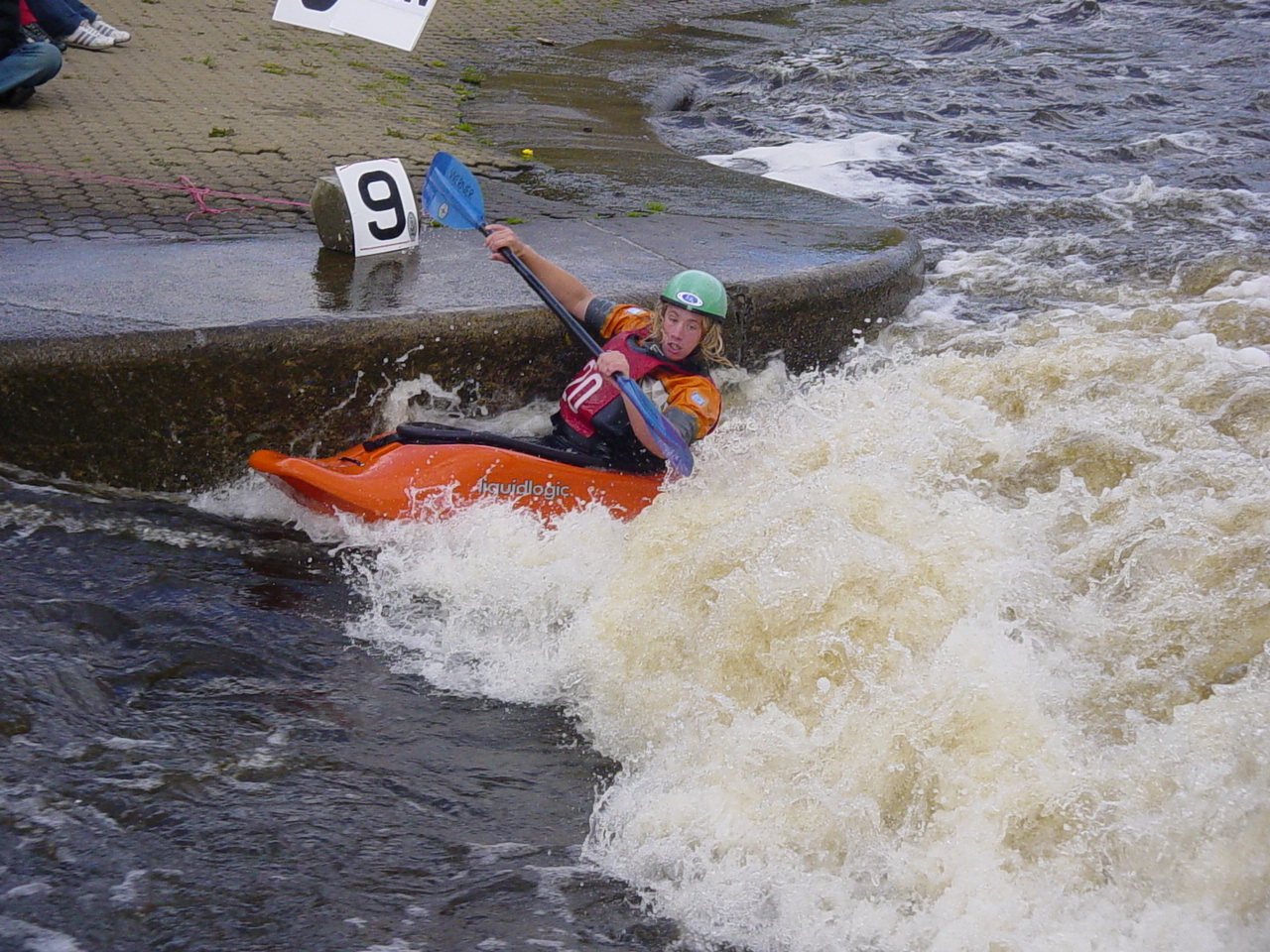
4: Dress for the situation
Don’t wear too much, as it’s amazing how the right amount of clothing can affect you. Compare how a full three mil steamer, gloves, woolly top, skull cap, bullet-proof cag and heavy creek helmet will affect you, compared to a shortie cag, wetsuit shorts, rash vest and light carbon lid. But of course, find the balance and don’t wear too little. Being cold is a sure way to negatively affect your paddling. As a rule, wear the minimum you can get away with and still be warm.
5: Watch the experts
Take time off the water and get a few instructional videos, like Ken Whiting’s, or EJ’s dvds. These things really break down the moves, and make it easy to see what’s going on with the water, the boat, the paddle, and you.
6: Don’t struggle
If you’re having trouble with a move, take a break, try something else, and come back to it later. You’ll be surprised at how much more focussed you are after a break.
7: Paddle with good boaters
You might normally avoid them like the plague, out of sheer embarrassment, but you’ll learn more from them than from paddlers of your own or lesser ability. Introduce yourself while waiting in the eddy at the hole, ask their advice and involve them in your learning. It will be less embarrassing if you let them know you’re trying out new stuff, and they’ll respect you for making an effort. Besides, if you do crack it, who doesn’t like seeing someone see another paddler succeed because of what they taught them?
8: Check your boat fittings
Having badly adjusted fittings can really affect your performance. Contrary to opinion, the best position for your seat is not always “as far forward as you can go without your feet going numb by the time the deck is on!” Check out your seat, thigh braces, back rest, and move them if necessary.
9: Go paddling at off peak times
Don’t always paddle when everyone else is on the water. It’s nice to have your mates around but without the crowds you can spend more time in the hole, or on the wave, and can concentrate on what you’re doing.
11: Get into the right frame of mind
If you’re having a bad day, get off the water and watch the others for a while. Get yourself a mug of cup a soup, and relax. If you’re tense, the moves won’t work, and you’ll just end up getting more stressed. Think about something other than paddling for a while. You can get back on the water then when your frame of mind has improved.
12: Try hand paddling
Perfect your hand roll in white water, and do some of your usual manoeuvres without your paddles. With your hands, you have to think a bit more about what you’re doing and make the water work for you, rather than it just working you! If you can master them with your paws, you’ll find them a cinch once you pick up your blades.
13: Visualise, man!
Create a mental image of yourself successfully pulling off a move. Break it down into A,B and C etc. Think of each part, and then put it together. Do A, then A and B, then A,B and C and so on. Worked for me when I was trying to cartwheel for the first time.
14: Get the right tools
We’re all different shapes and sizes. Don’t buy a particular model just ‘cos everyone else has one. Try as many as you can before you buy and go for the most comfortable one, or the one you feel you can do most in. Likewise, if buying new paddles, you can probably get them customised to any length or feather.
15: Get fit for paddling
And it’s not the same as just getting fit. Take any extremely fit person, put them in a boat, and train them hard for an hour or two, and they’ll hurt in places they didn’t know they had. We use different groups of muscles for this than for most things. Try a good dose of upriver paddling. It’s not as exciting as hucking it large off a waterfall, but it does make the difference. Try sprinting around on the flat, or racing the others to the playspot. It will increase your endurance and your ability to pump up the power when it’s needed.
16: Try different sites
It’s better to paddle at lots of different sites, rather than just sticking to your favourite. Try out different sites, and see if you can make your regular moves work there. If you can’t, watch the regulars, and see how they do it. Often, a little change in your technique will be enough to get it nailed.
17: Get someone to video you, and watch yourself later
You’ll be amazed at how much you can pick up this way. Y’know when you watch the experts, and say “man, that looks easy” well now you can watch yourself from the same perspective and you might be able to see what you’re doing wrong.
So, there you have it. If that little lot doesn’t get you into the next rodeo finals, then nothing will. Any questions on a postcard to the usual address, let me know and I’ll see if I can solve your problems. Meantime, get out there and practice!
JK
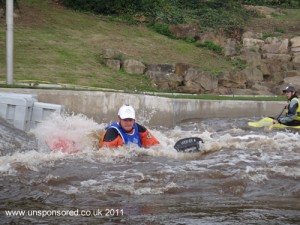
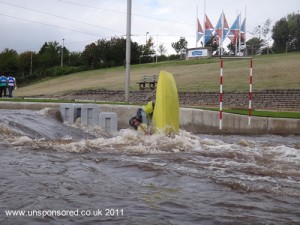


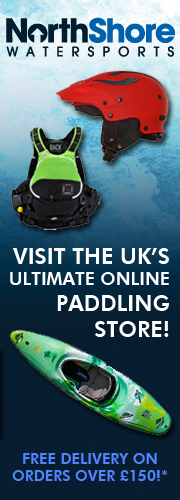
Leave a Reply